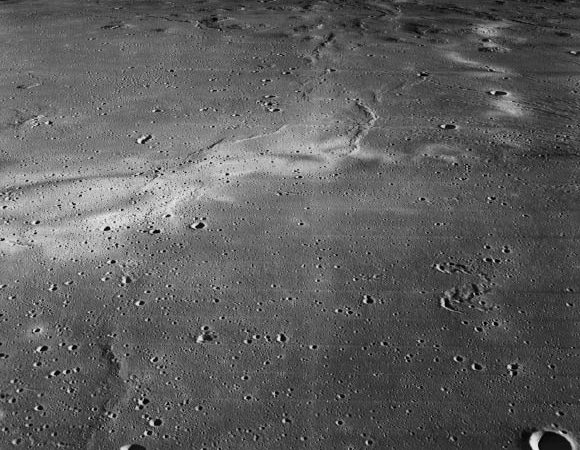Planetary researchers from Rutgers University and the University of California, Berkeley may have solved the mystery behind lunar swirls, wispy bright regions scattered on the Moon’s surface. The solution hints at the dynamism of the Moon’s ancient past as a place with volcanic activity and an internally generated magnetic field.
Lunar swirls are collections of finely structured, bright and dark surface markings, alternating over length scales of typically 0.6-3.1 miles (1-5 km).
The most famous, called Reiner Gamma, is about 40 miles (64 km) long and popular with backyard astronomers.
Most lunar swirls share their locations with powerful, localized magnetic fields.
The bright-and-dark patterns may result when those magnetic fields deflect particles from the solar wind and cause some parts of the lunar surface to weather more slowly.
“But the cause of those magnetic fields, and thus of the swirls themselves, had long been a mystery,” said co-author Dr. Sonia Tikoo, of Rutgers University.
“To solve it, we had to find out what kind of geological feature could produce these magnetic fields — and why their magnetism is so powerful.”
Working with what is known about the intricate geometry of lunar swirls, and the strengths of the magnetic fields associated with them, Dr. Tikoo and Dr. Douglas Hemingway from the University of California, Berkeley developed mathematical models for the geological ‘magnets.’
They found that each swirl must stand above a magnetic object that is narrow and buried close to the lunar surface.
The picture is consistent with lava tubes, long, narrow structures formed by flowing lava during volcanic eruptions; or with lava dikes, vertical sheets of magma injected into the lunar crust.
But this raised another question: how could lava tubes and dikes be so strongly magnetic? The answer lies in a reaction that may be unique to the Moon’s environment at the time of those ancient eruptions, over 3 billion years ago.
Past experiments have found that many lunar rocks become highly magnetic when heated more than 1,100 degrees Fahrenheit (600 degrees Celsius) in an oxygen-free environment. That’s because certain minerals break down at high temperatures and release metallic iron. If there happens to be a strong enough magnetic field nearby, the newly-formed iron will become magnetized along the direction of that field.
This doesn’t normally happen on Earth, where free-floating oxygen binds with the iron. And it wouldn’t happen today on the Moon, where there is no global magnetic field to magnetize the iron.
But in a study published last year, the scientists found that the Moon’s ancient magnetic field lasted 1-2.5 billion years longer than had previously been thought.
“No one had thought about this reaction in terms of explaining these unusually strong magnetic features on the Moon. This was the final piece in the puzzle of understanding the magnetism that underlies these lunar swirls,” Dr. Tikoo said.
The results are published in the Journal of Geophysical Research: Planets.
Source: Sci News

































Leave a Comment
You must be logged in to post a comment.